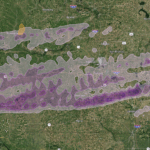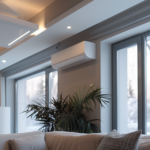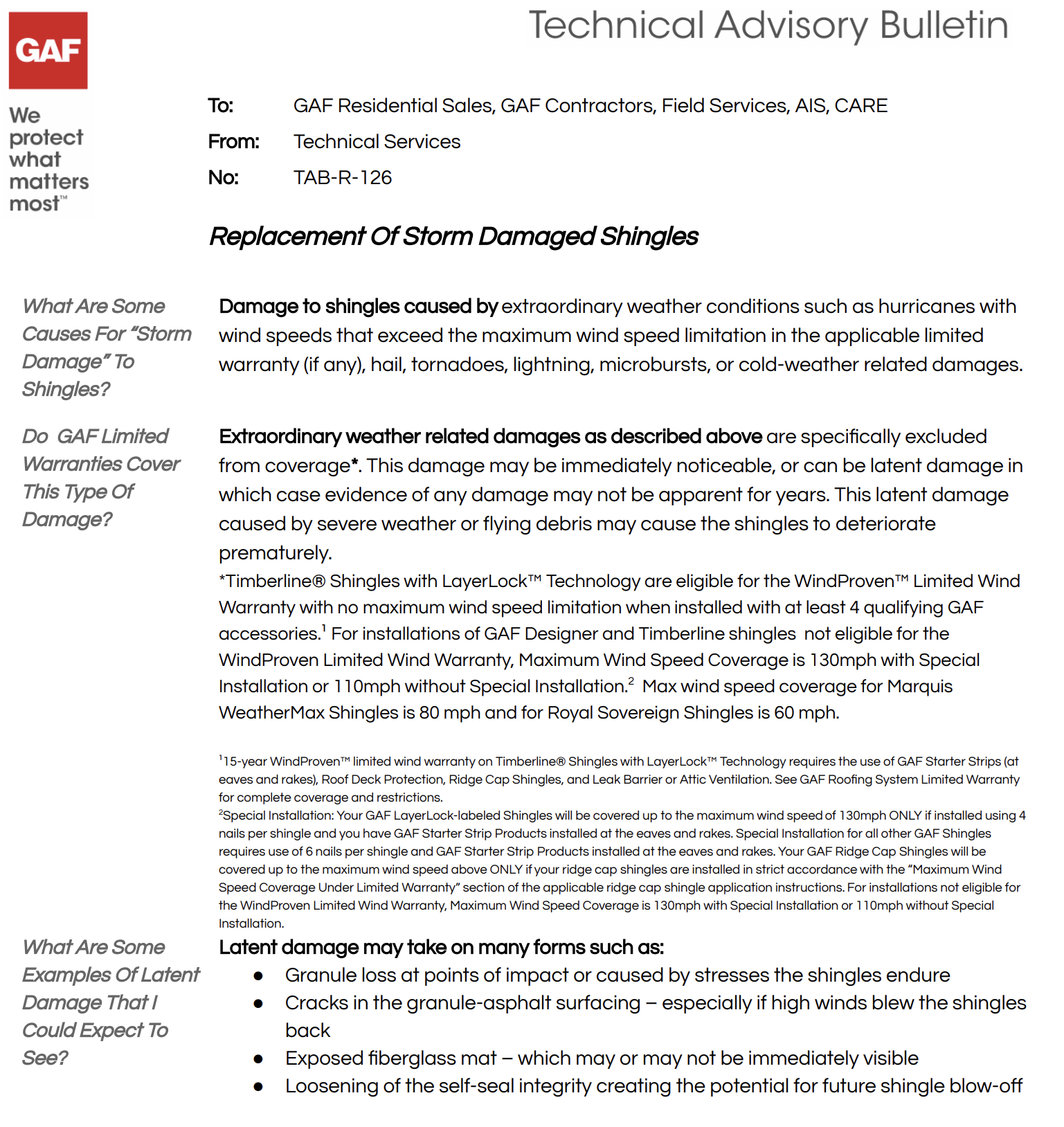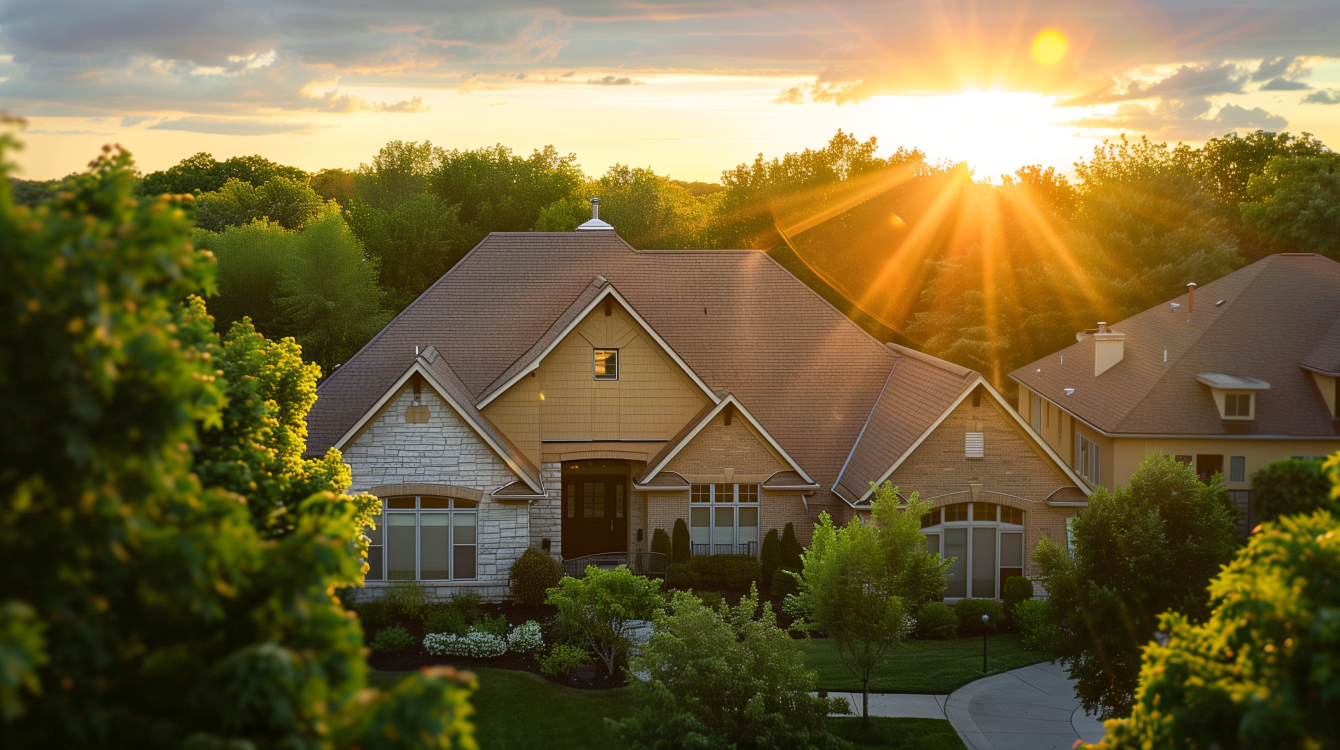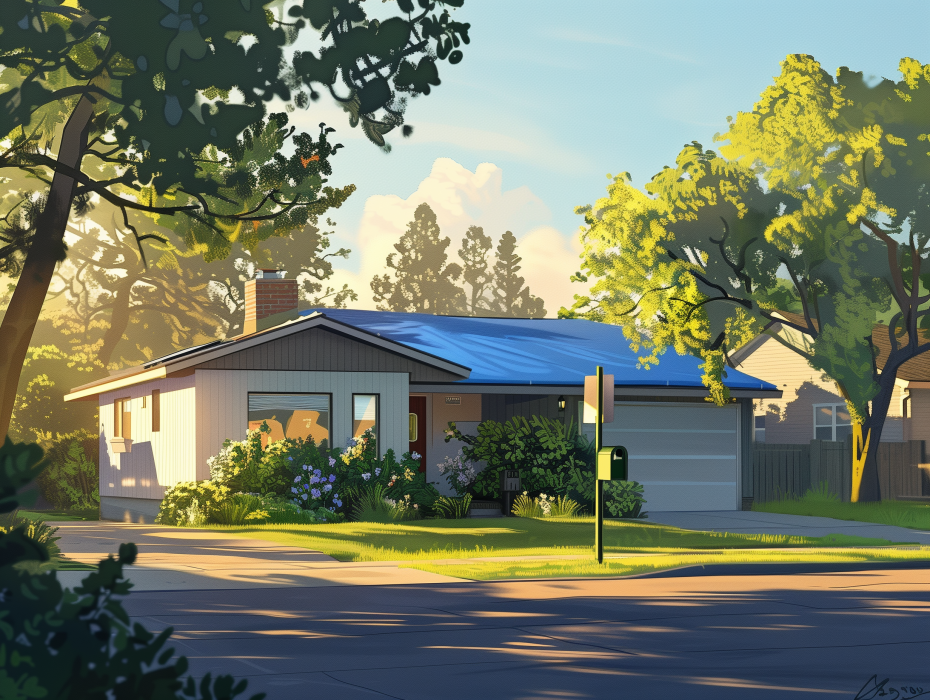Causes of Storm Damage to Shingles
Storm damage to shingles can be caused by extraordinary weather conditions such as hurricanes, hail, tornadoes, lightning, microbursts, and cold-weather-related events. These conditions can exceed the maximum wind speed limitations specified in the applicable limited warranty, leading to visible and latent damage to shingles.
Do GAF Limited Warranties Cover This Type of Damage?
Extraordinary weather-related damages are specifically excluded from coverage. This damage can be immediately noticeable or latent, with evidence of damage not apparent for years. Latent damage caused by severe weather or flying debris may cause shingles to deteriorate prematurely.
Note:
- Timberline® Shingles with LayerLock™ Technology are eligible for the WindProven™ Limited Wind Warranty with no maximum wind speed limitation when installed with at least 4 qualifying GAF accessories.
- For other installations, maximum wind speed coverage is 130 mph with Special Installation or 110 mph without Special Installation.
- Marquis WeatherMax Shingles have a max wind speed coverage of 80 mph, and Royal Sovereign Shingles have a coverage of 60 mph.
Examples of Latent Damage
Latent damage from storms can manifest in several ways, including:
- Granule Loss: At points of impact or from stresses endured by the shingles.
- Cracks in Surfacing: Especially if high winds blew the shingles back.
- Exposed Fiberglass Mat: Which may or may not be immediately visible.
- Loosening of Self-Seal Integrity: Creating potential for future shingle blow-off.
Concerns About Granule Loss
Granule loss, whether immediate or gradual, exposes the asphalt coating to the environment, accelerating aging and premature deterioration of shingles. Failures caused by granule loss from storm damage are not covered under the GAF Shingle & Accessory Limited Warranty.
Note: Granule loss is not just cosmetic damage. The process known as “sugaring,” defined as adding loose granules to damaged shingles with asphalt cement, is not a permanent repair.
Handling Tarped Roofs
While tarping a damaged roof is effective for immediate protection, securing the tarp by nailing through the shingles damages them. Shingles nailed through must be replaced; caulking these nail holes is not a permanent repair and is not covered under GAF’s warranties.
Replacing Individual Shingles vs. Entire Roof
Replacing individual storm-damaged shingles is possible, but latent damage to surrounding shingles is difficult to assess. If the damage is confined to one plane of the roof, replacement of just the damaged plane may be possible. When replacing individual shingles:
- Replace any nails removed from surrounding shingles.
- Hand-seal the surrounding shingles to ensure a weather-tight roofing system.
- Use GAF Starter Strip Shingles, Ridge Cap Shingles, and other GAF Accessory Products to properly complete the repair.
Conclusion
Storm damage to shingles requires careful assessment and proper repair to ensure the longevity and performance of your roofing system. Understanding the types of damage and the limitations of warranty coverage helps in making informed decisions for repairs and replacements.
For Immediate Service or Consultation
Contact Allied Emergency Services, INC.
Phone: 1-800-792-0212
Email: Info@AlliedEmergencyServices.com
Location: Serving Illinois, Wisconsin, and Indiana with a focus on the greater Chicago area.
If you require immediate assistance or have specific questions, our human support is readily available to help you.
Disclaimer: This article is intended for informational purposes only. For professional advice, consult experts in the field.
